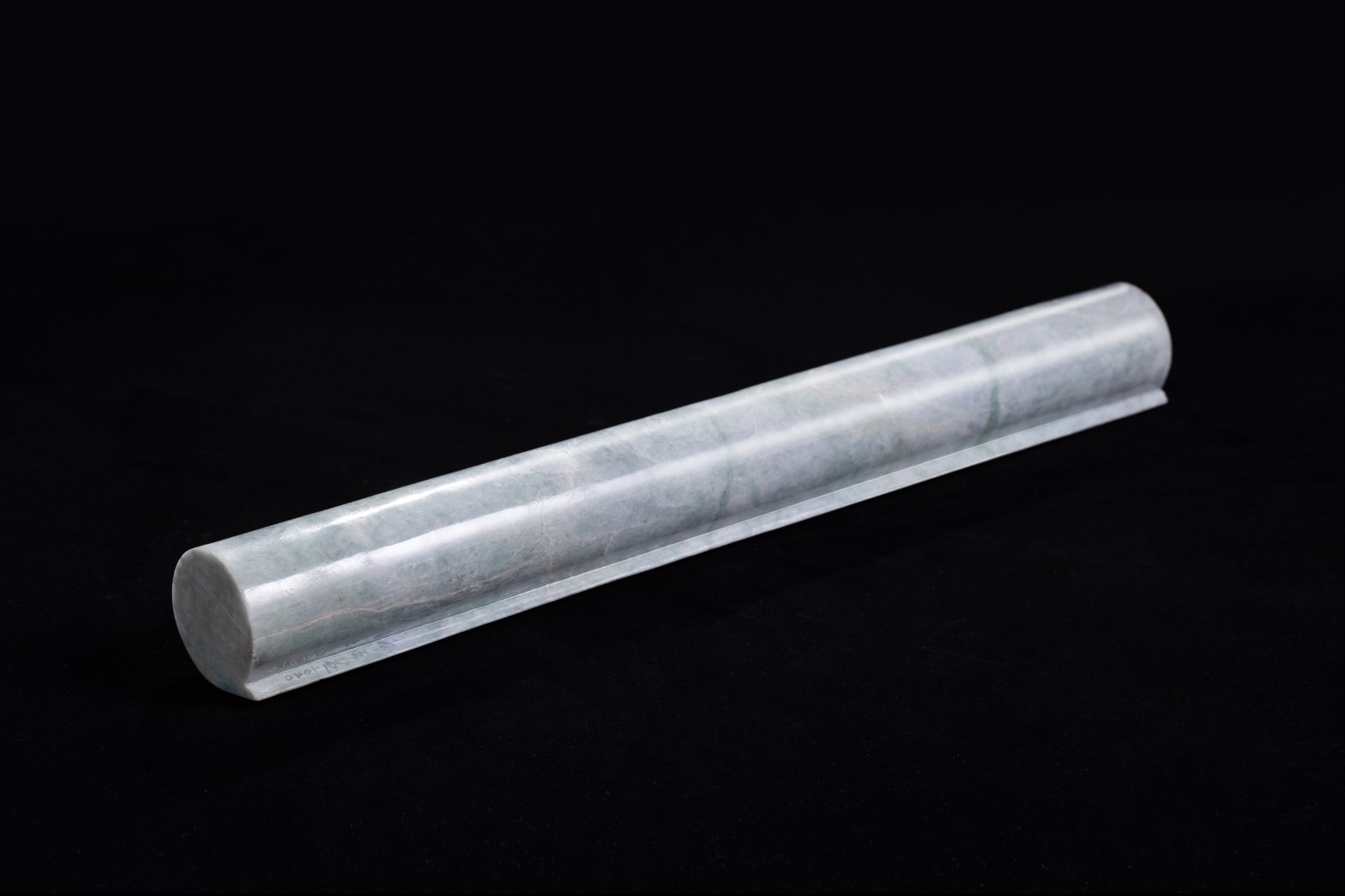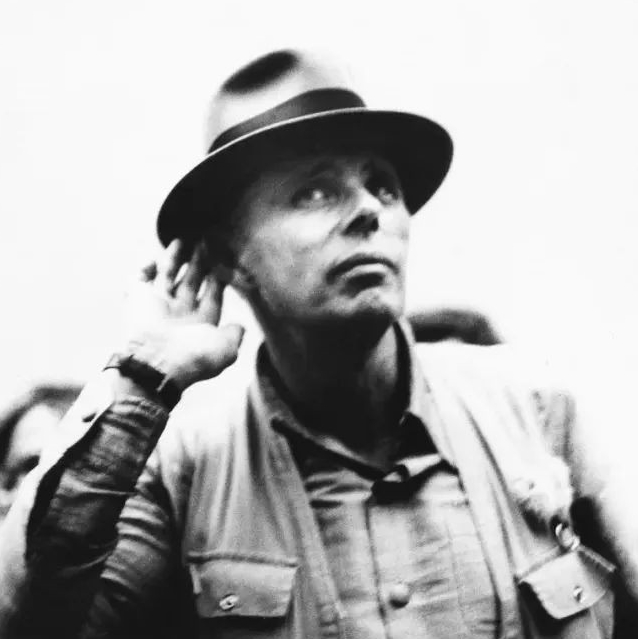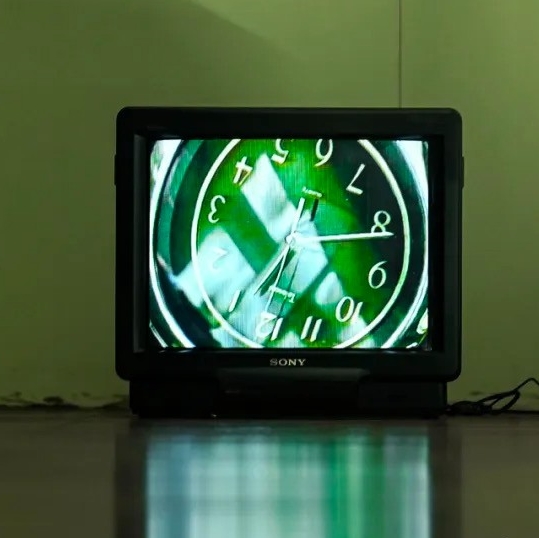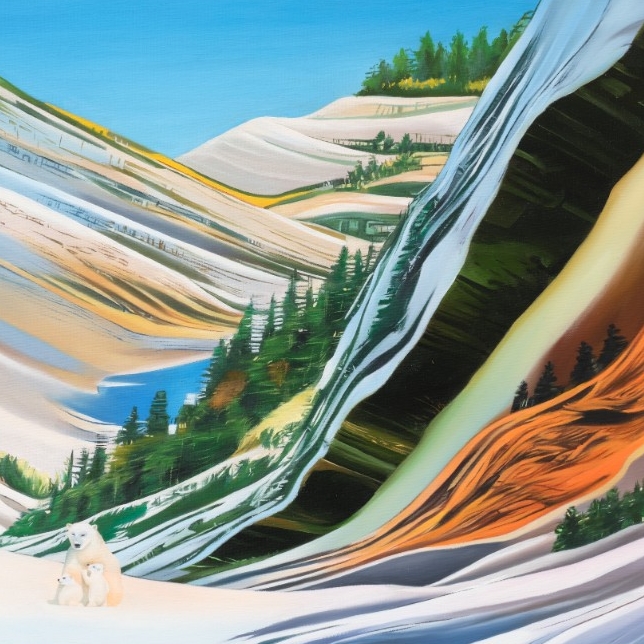
For anyone who knows contemporary Chinese art, He Yunchang is regarded as a representative of Chinese performance art. When spectators with this understanding enter the gallery of Wind H Art Center, they absolutely doubt whether what they are visiting is He Yunchang’s solo exhibition or not: although videos and installations are always accompanied by his work, “He Yunchang: Endless Shadowlands” held at Wind H Art Center is an exhibition that completely centers around installation art.

Three Years Later, Jadeite, 645×240×240cm, 2021
In recent years, He Yunchang has gradually shifted his creative focus to the material of jadeite. According to the description of the exhibition, He Yunchang was accidentally attracted by this precious property after his return to his hometown in Yunnan in 2017. The admiration of jade has quite a long history in China, from national symbols to psychic sacred objects, from personal accessories to funeral rituals, from a vulgar perspective it is the manifestation of wealth, while from an elegant perspective it is the transformation of heaven and earth, and the jade has been endowed with the rich spirit of Chinese culture. For an artist who has been devoted to performance art for 20 years, what does jadeite mean?

The Divine Scroll is One Hundred and Eight Thousand Meters, Jadeite, 6.8×74.7×6.4cm, 8420g, 2020
It is obviously inappropriate to regard jadeite as a symbol of wealth. After all, He Yunchang is regarded as an artist who is far away from the vulgarity of wealth. It is also hard for us to imagine that an artist who has used his body to challenge the disciplines and logic of society and civilization for a long time will suddenly have an interest in jewelry. If we carefully consider how jadeite is used in the exhibits, the consistent common theme within He Yunchang’s art can also be found. On the one hand, He Yunchang seems to love the stability of jadeite over a long period of time. He praises the “unique” and “objective” beauty in jadeite, and this objectivity is precisely established in a relatively safe environment. Only when it is related to heaven and earth, life and death (for example, in Chinese traditions), does jadeite excel in significance as different from ordinary jewelry; similarly, the sense of strangeness and heterogeneity in He Yunchang’s performance art can only be highlighted in a supremely systemic civilized society where its significance can be manifested. Otherwise, jadeite is often a precious stone that is considered “dangerous,” as the coexistence with jade worthy of several million yuan leads to much pressure. It is not only for the exhibitor, but also for the spectators, when walking with shoe covers in the mirror house on the third floor of the exhibition hall, spectators must be careful not to disturb the transparent showcases and the staff standing at the side are equally nervous.

Exhibition View
As a performance artist, He Yunchang has always been regarded as a “troublemaker.” It is not that his behavior caused specific harm, but the absurdity and strength always make spectators feel nervous. He is like the hermits such as Diogenēs or the Seven Sages of the Bamboo Forest who are destined to find it difficult to integrate into a stable and orderly functioning society, and there are no police officers in pre-modern society. He Yunchang does not seem to care about the economic value of jadeite, just like his indifference to the pain inflicted on his body in his previous works.

Hall of Falling Stars, Jadeite, Acrylic, Stainless steel, 52×194×162cm, 2021
From performance art to installation, being abject is a common trait in He Yunchang’s creation. Being abject does not come from a “fascination with harm.” Although he is often injured, the focus of He Yunchang’s creation has never been on violence. His body was fixed, cut, beaten, and consumed, becoming a humble body that breaks away from the symbolic order. In the final analysis, abjectness comes from the blurring boundaries. Cold leftovers, faeces, corpses, everything makes us sick. Nausea keeps us away from them. The reason for our shame is not that they are completely filthy, but that they are related to us. We have relied on them, eliminated them, and will eventually become them. Since we cannot separate from them completely, we are nervous, dizzy and even want to vomit. By humiliating parts of ourselves and throwing up, we regain our boundaries with them.

The Beginning and the End, Jadeite, 8.2×52.5×8cm, 6600g, 2021
Abjectness is the source of the strange feeling that lingers around when we confront He Yunchang’s works. In He Yunchang’s narration, he assumed the audience’s reaction to be like this: “Many years later, someone laughed after a meal and talked about a fool that was delusional to pull a mountain down, divide the river into two halves, move the sunlight, let the river flow backwards, defeat a hundred people and drink with a hundred people.”1 He Yunchang’s performance art often requires few skills, and in principle anyone can copy it. But it might be refuted, is it necessary to copy them? They cannot produce any “aesthetic value” in our daily life, except for “fools”, “lunatics” and “liars”, who would do such things? Satire is a way to avoid artistic questioning, because once He Yunchang’s performance art is taken seriously, abjectness will be generated in us and bring us to the boundaries of daily life.

Double Ridge, Jadeite, Glass, Water, Installation Variable, 40×90×24cm (Jadeite), 7700g, 2021
Curator Xie Suzhen wrote in the foreword that “Ah Chang was raised on the desires of humankind,” and also stated that “his performance art is the outcome of reason,” but this explanation is not clear enough. If desires are regarded as the driving force of life, then it is not too much but too little today when consumption suspends and conceals desires, thereby making it obey the economic law of reproduction; if rationality is regarded as a means of life preservation, then it is not too little but too much today when industrial society and capitalist production have built an “ideological world,” where everything is constructed and operated under the rule of reason and regulations. Here, He Yunchang is like a prophet, constantly reminding us of the forgotten potential of our lives in modern life.

Amateur Poet Asked A Belly Dancer for the Way, Jadeite, 7.3×4×1.2cm, 108g, 2020
Xie Suzhen said that: “In this exhibition, he uses words to guide the viewer. Jade heeds the footsteps of reality.” There is still a risk of mediocrity, and He Yunchang’s strategy is absurdity. A title like Amateur Poet Asked A Belly Dancer for the Way resolves the ordinary grand narrative. When asked about the meaning of the work, he often just smiled and told a simple myth, usually about love. Just like his performance art, the theme is just an unimportant surface. For example, in “The Distance between Him and Her,” it seems to show the love story of a pair of young people. Dozens of jade strips spliced from a pair of old clothes hangers and scattered on the floor, entangled with countless black garbage bags in the space. On the opposite wall, pink plastic bags swayed under the light, between the straightforward text of the title and the vague narrative, between the expensive and cheap materials, when we carefully walk through the entire space, abjectness is born again.

Exhibition View
He is in the World, Jadeite, 8×38×3cm, 530g, 2018
When He Yunchang explained the title of the exhibition, he said: “Art has its own charm, it embodies the natural law of ‘the great Tao,’ along with the ever-changing phenomena of everything in the universe. How beautiful the world is if you think about it this way. When something doesn’t work out over three years, then what about after thirty years, or three hundred years? We might not be there anymore at that time, but I believe that things follow their own ways of being. The idea of the ‘endless shadowlands’ is the belief in the multi-dimensional nature of existence, to perceive a thousand flowers blooming, like being tipsy without wine.” For He Yunchang, who is 54 years old, from a young performance artist at the end of the 20th century to a representative figure of Chinese performance art today, he may no longer be able to achieve the thousands of kilometers of walking as he did 15 years ago (“The Rock Tours Around Great Britain”, 2006-2007). Jadeite may be a response to this period of time. This material is completely opposite to performance and it can maintain its form over a long period of time. He Yunchang’s famous performance works are only used as materials in a corner of the exhibition hall. However, his performance art fills the entire exhibition as a trail. This may explain the image on the poster, He Yunchang lying naked, with fragments of jadeite scattered over his body, like a dead soul waiting for future archaeological excavations, a trace of a performance artist who has been creating for more than 20 years.
Text by Luo Yifei, ed. and trans. by Sue/CAFA ART INFO
Image Courtesy He Yunchang and Wind H Art Center
He Yunchang, “Adults’ Fairy Tales”, He Yunchang Studio.

About the exhibition
Dates: September 20-December 19, 2021
Venue: Wind H Art Center
About Wind H Art Center
Wind H Art Center is located at the south gate of Beijing's contemporary art landmark, 798 Art District. It was designed by the renowned architect Dong Yugan. In the interior space, the architect utilized gardening methods to create a contemporary imagery of mountain-and-water landscapes.
Wind H Art Center integrates idea incubation, academic research, art exhibitions, collaborative innovation, humanities education, and cultural creativity. The center's goal is to establish a diversified research-oriented art institution and create an academic platform for international art exchanges.
Wind H is committed to discovering and presenting artists and creators' art practice that explores the academic frontier and the contemporary context. The center emphasizes experimentality to demonstrate Chinese contemporary art's new vectorial development. Simultaneously, the art center emphasizes the integration and exchange of different disciplines to build a bridge between art and life, to reveal, explore and develop the creative potential of humans.




























